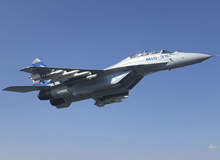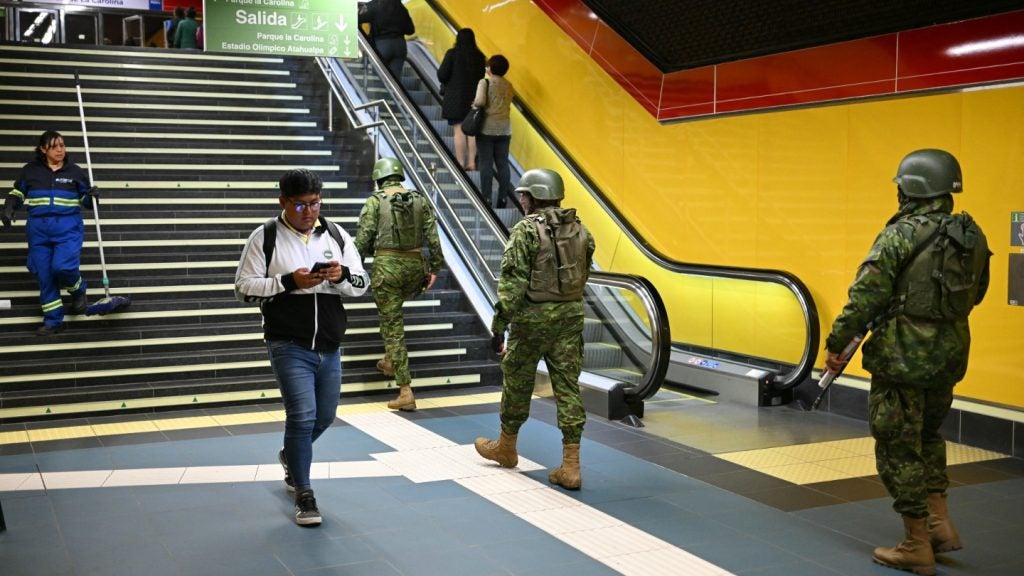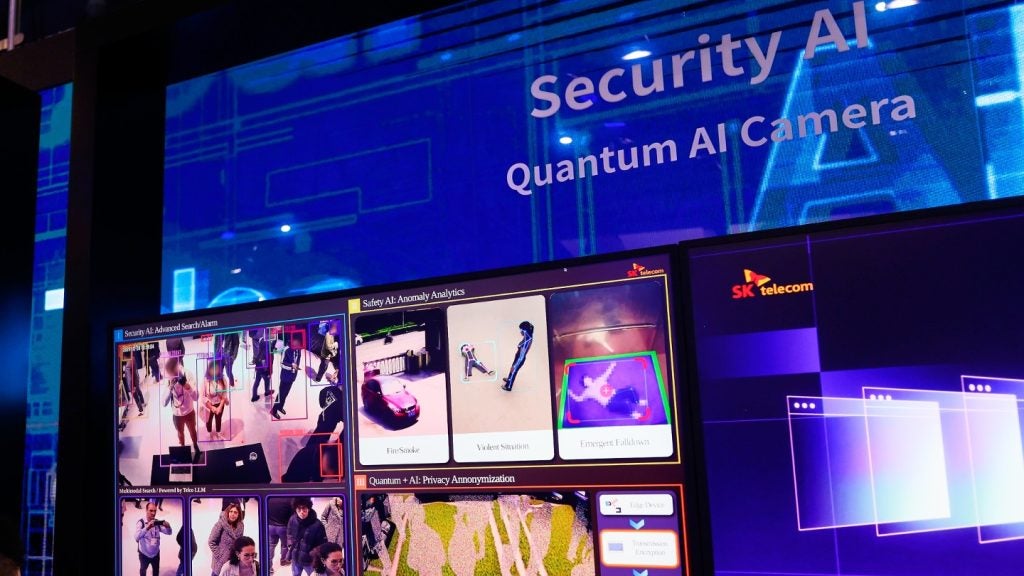
Suppose Boeing merged with Lockheed Martin. Such news would surely make the front page, especially if Northrop Grumman didn't exist.
In fact, something like this is happening in Russia. On 29 May, Anatoly Belov, the new director general of Russia's second largest military aerospace company, RAC MiG, stated to Kommersant business daily, "We will join UAC this year." The state-owned United Aircraft Corporation (UAC) is Russia's largest aerospace company, and one of the largest businesses in Russia's entire economy.
"We are expecting Ernst & Young to complete [its audit] in June, and then the usual integration process will begin," said Belov. The merger may not be the proverbial done deal, but it looks that way: on 19 March, RAC converted itself from a federal state unitary enterprise (FSUE) to a public joint stock company (JSC), which made ownership transferrable.
This consolidation would be consistent with the overall economic strategy of Vladimir Putin, the former and still quasi-President of the Russian Federation. It would also represent the final step in reconsolidating the Russian aerospace industry, which has not been this centralised since the Brezhnev era.
Two caveats are needed here. First, military aerospace (even after excluding outer space) encompasses several segments: (a) helicopters as well as fixed-wing planes; (b) missiles and rockets in addition to the platforms that carry them; and, arguably, (c) technology suites for air-centric electronic combat, including network warfare.
Second, aerospace bifurcates into the military and civil sectors, and although most of the applications for (c) and (b) above are purely military, the overlap for (a) is much greater – and in all cases, the more basic the research, the more dual-purpose it is.
How well do you really know your competitors?
Access the most comprehensive Company Profiles on the market, powered by GlobalData. Save hours of research. Gain competitive edge.

Thank you!
Your download email will arrive shortly
Not ready to buy yet? Download a free sample
We are confident about the unique quality of our Company Profiles. However, we want you to make the most beneficial decision for your business, so we offer a free sample that you can download by submitting the below form
By GlobalDataConsequently, extrapolating from the airplane segment to the entire industry is dangerous. Although the helicopter segment actually consolidated earlier than the airplane segment, the electronics and weapons segments still comprise many entities. Nevertheless, if the industry has a bellwether, it's the aircraft segment.
Assuming this merger occurs, you have to ask if Russia's aerospace sector has merely come full circle – or will it have completed the first turn of an upward spiral?
THE SOVIET SYSTEM OF SEPARATE STAGES
Soviet economic planners divided the aerospace industry vertically between design and production entities. Upstream, relatively small design bureaus (OKBs), generally named for their founding designer, performed R&D. Six bureaus comprised the 'A list' of the Soviet airplane industry:
- Tupolev, formed in 1922, was the first OKB, and eventually specialised in heavy bombers for long-range, 'strategic' missions
- Ilyushin (founded 1933) evolved into the big six's generalist, designing most types of military aircraft at one point or another
- Yakovlev (1934) designed both fighters and bombers
- Sukhoi (September 1939 – coincidentally or not, the same month Nazi Germany invaded Poland), focused on air superiority fighters and 'frontal attack' aircraft
- Mikoyan Gurevich (December 1939) is probably the most famous of the big six due to its successful and widely exported MiG fighter series
- Antonov (1952) specialised in very large cargo and transport aircraft
After approving designs, the state assigned them to large, standalone factories for mass production. Because these factories were apex industrial consumers and technological talent incubators, Soviet planners spread them out geographically – especially during WWII, in order to preclude concentrated losses from invasion or strategic bombing.
Managerial organisation cued off location, leading to 'town companies' such as the Novosibirsk Aircraft Production Association, or NAPO. Although not all plant acronyms end in 'PO', Russian aerospace units ending in 'PO' are almost always plants.
COUNTRYWIDE COMMERCIAL COLLAPSE AND CHAOS
After the Soviet Union dissolved in 1989, the Russian aerospace industry experienced the same agonising contraction as the Russian economy in general.
Indeed, the collapse of the domestic aircraft market on the demand side and the withering of vendors on the supply side prompted observers to wonder if the industry would survive at all, let alone regain international competitiveness.
The consensus was that the Russian aircraft industry desperately needed consolidation (ironic considering that the Marxism was theoretically about centralised government control). Industry fractionalisation had a number of dimensions:
- Too many design bureaus existed upstream. A rough indication of this problem was the OKB number of the Kamov bureau: #938
- Although fewer production entities existed downstream, their problems reflected the general economic shortcomings of communism
- The design / production separation encouraged managerial inefficiency, yet the practical yoking of specific factories and designers discouraged competition, giving the industry the worst of both worlds
After the initial political chaos subsided, the federal government took its first big plunge into the consolidation pool. In January 1996, then-President Boris Yeltsin ordered the formation of VPK-MAPO (Military Industrial Complex – Moscow Aircraft Production Association). This entity comprised 12 separate businesses, including Mikoyan and component fabricators such as the Klimov propulsion outfit.
Like most inaugural ventures in novel environments, VPK-MAPO stumbled early on. That the consortium was less a unified firm than a semi-feudal collection of corporate principalities limited its manageability. Moreover, the complex was plagued by managerial malfeasance and infighting, faults endemic to Russia during its 'gangster capitalism' phase, but common to economies transitioning toward private enterprise (and not exactly rare in the developed West, either).
These problems alienated the Mikoyan people, who feared their prized brand could be tainted, and who were never impressed by the production executives to begin with. After near-revolts by Mikoyan separatists caused a few Byzantine restructurings, VPK-MAPO was reorganised into its current form, Russian Aircraft Company (RAC) 'MiG' (the latter to satisfy Mikoyan loyalists and facilitate export marketing). As a further indication of who runs the show, the URL root for the RAC
'MiG' corporate website is 'migavia'.
In any event, RAC (or MiG) remained vertically integrated. The firm retained most of MAPO's original assets, including the Voronin Production Centre and the Kamov helicopter subsidiary, which itself was internally integrated. MiG reshuffled MAPO's other assets to create divisions for engine and instrument fabrication, testing, and full-cycle logistic support.
Throughout this phase, RAC remained an FSUE, which meant that the state was the sole owner. Given the gross inefficiencies and mispricing that characterised the first wave of privatisation in its commodities industry during the 1990s, Russia was not prepared to subject its core national security infrastructure to the vicissitudes of the emerging brass-knuckles capitalism.
PUTIN PRIORITISES POWER
Putin's ascension to the presidency set the stage for a more systematic reorganisation of the defence sector. Not a fan of US-style capitalism, Putin seemed intent from the outset on creating a mixed economic model for Russia, in which the state retained effective control – although not necessarily through direct ownership and certainly not through sole ownership or active tactical management.
Determined to restore Russia's international power, Putin viewed the Russian defence industry as a dual-purpose asset: a vital base for rebuilding Russia's own neglected military, and perhaps the only non-commodity domestic sector that could rapidly become competitive in its global market.
Of course, being competitive meant expanding the industry's restructuring, and Putin directed planning for this purpose almost immediately. The result was the federal special programme 'Reforming and Development of Defence Industry Structure' (2002-2006).
By the time Putin was re-elected in 2004, aircraft OKBs had paired off with production companies, creating a multiplayer market reminiscent of the US aerospace industry prior to the 1960s. Tupolev and Ilyushin had hooked up with Kazan and Voronezh, respectively, while Sukhoi acquired two POs.
Running counter to the OKBs' leadership, the Irkut Corporation (named after the Irkutsk Aviation plant and the eponymous river) had subsumed Yakovlev. Only Antonov, which had integrated itself due to the special challenges of designing huge aircraft, stayed independent.
Nevertheless, Putin viewed this level of integration as insufficient. In 2006, the last year of the four-year restructuring programme, United Aircraft Corporation (UAC) was created to consolidate these four entities. As with RAC, the federal government owns majority interests in each division, either directly via the UAC holding company or indirectly via interlocked shareholding.
CURRENT CONFIGURATION: CORPORATE CENTRALISATION, DIVISIONAL INDEPENDENCE
As constituted today, UAC acts as a corporate umbrella for all its subsidiaries. Each of UAC's four main divisions is vertically integrated, operates separately, and pursues distinct, if still somewhat overlapping, market niches:
- Tupolev primarily focuses on the civil aviation market, but retains responsibility for potential successors to the Tu-160 Blackjack bomber (equivalent to the USAF B1-B Lancer)
- Ilyushin represents the inverse of Tupolev, focusing on the military cargo and transport market. Because all forms of cargo and people effectively represent dead weight once inside the fuselage, Ilyushin's activities naturally overlap with the civil market
- Irkut has the widest functional portfolio, consistent with its history as a more diversified company. Aside from its own trainer and amphibious aircraft projects, Irkut competes in the onboard electronics and avionics niche; all of these programs have dual military / civilian uses
- Sukhoi has the widest product portfolio within the military market, focusing on its core expertise in fighter and attack aircraft. Ironically, though, Sukhoi's most significant project right now is the Superjet 100 commercial airliner
Tupolev, Irkut, and Sukhoi have all pursued UAV programmes. Although Tupolev seems like the least likely candidate, it worked on UAV prototyping in the 1970s.
At Irkut, Yakovlev's UAV programme seems directed toward reconnaissance and surveillance missions that are not necessarily military, which makes sense given that Yakovlev had effectively ceded the fighter / attack aircraft market to Sukhoi and MiG long before Irkut acquired it.
Consistent with its manned aircraft expertise, Sukhoi is one of two companies developing an armed UAV (UCAV) – the other is MiG, which unveiled a full-scale mock-up last year.
Within UAC, Irkut is the most frequent collaborator, which is not surprising given its wider mandate. In particular, it contributes to Sukhoi's Su-30 multirole fighter programme and the civil MS-21 project jointly managed by Irkut and Tupolev.
More significantly, UAC seems quite open to international cooperation – provided it doesn't involve the military sector. This reflects Putin's policy of treating military aviation as a national strategic asset, like the air force itself. In terms of technology transfer, this makes strategic sense in that the military aerospace side is currently far more globally competitive than the civil sector is.
FINANCIALS AND FORECASTS
Acquiring RAC 'MiG' would be less significant for UAC financially than for the industry and Russia strategically. According to Belov, RAC's current order portfolio totals roughly $4bn, with additional options for $2.5bn through 2011. By comparison, Irkut alone most recently valued its backlog at over $5bn.
UAC has set itself ambitious growth objectives: its development strategy calls for tripling total corporate revenues from a stated $4bn currently to $12bn-$14bn by 2015.
The civil sector is the higher-growth opportunity – largely because Russia's production is heavily skewed toward the military sector, in which UAC wants to maintain its market share at 12%-15%.
Perhaps UAC expects the military aircraft market to triple in seven years. With orders such as India's $10bn multirole fighter tender on the table, such growth is not impossible. It becomes even more plausible if UAC's marketing strategy and Russia's foreign policy are intended to be synergistic. On that score, the jury is still out.






